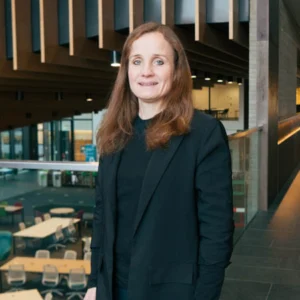 There are few people in either healthcare or academia that do not believe in the benefits of research collaboration across both spheres. But building these collaborations is not always straightforward.
There are few people in either healthcare or academia that do not believe in the benefits of research collaboration across both spheres. But building these collaborations is not always straightforward.
A recent survey by researchers from the Oxford Institute of Applied Health Research (OxInAHR) asked NMAHPPs (nurses, midwives, allied health professionals and physiotherapists) across NHS England for their perspectives to identify both the barriers and enablers of academic clinical research collaboration.
The results made for fascinating reading, according to project co-lead Professor Benita Olivier, co-director of the Healthy Living Research Centre in the Oxford Institute of Applied Research (OxInAHR) at Oxford Brookes University.
“One issue is that both clinical and academic staff believe the pressures on them are misunderstood,” says Benita. “Clinicians think academics don’t understand the demands of their clinical responsibilities and academics feel clinicians are unaware of how little time they have for research outside their teaching. But these misconceptions can be overcome, if clinicians and academics spend more time together.”
That was the aim of the 2024 OxInAHR Symposium which brought together over 100 clinicians, academics, and researchers from institutions including Oxford Brookes University, the Oxford Health NHS Foundation Trust, Oxford University Hospitals NHS Foundation Trust, and Oxford University. The event set out to build bridges and spark new collaborations.
As part of the symposium, participants were split into groups to discuss the research barriers and enablers that emerged from the survey and to suggest ways to improve collaboration.
Questions included how best to foster relationships and networks between university and NHS staff and how to enhance a culture of research collaboration between a university and NHS Trust. Participants then voted to find the top five initiatives for each challenge, with the resulting recommendations for action compiled into a on the survey and group discussions.
“There were so many interesting ideas put forward for fostering research collaboration, from mini conferences to innovation days and shadowing opportunities,” says Benita. “What we hope to see is some of those really practical suggestions being taken up and implemented across Oxford and beyond.”
Benita is already leading another project which seeks to understand and enhance the research environment for NMAHPPs within Oxford Health NHS Trust, in an initiative that could be rolled out across other NHS trusts in England.
The project, called ‘Research Interest, Engagement, Capacity and Capability’ is developing a single form to capture data on the level of research involvement and interest amongst NMAHPPs at the Trust.
“Data related to research interest, activity, capacity and capability is held in different places, which makes it hard to have an overall picture,” explains Benita. “By bringing it into one place and standardising the format, we can see where the gaps might be, in terms of research involvement by different professions, or career stages.”
The project is also using the newly devised Self-Assessment of Organisational Readiness (SORT) tool, to determine how well the environment at OH NHS FT is supporting NMAHPPs in research, and again, where the gaps might be and where resources need to be targeted. By looking at both an individual and organisational level, Benita and her colleagues will then be able to see the whole picture and map it against organisational plans for research, to identify the priorities for enhancing research capability and capacity.
The process will first need to be piloted within the Trust – and can then be rolled out to other Trusts for further validation so the tools can be applicable across the wider NHS.
Benita feels that it’s an exciting time for NMAHPP research, given increasing focus on the area in recent years.
“It’s undeniable that there are still fewer clinical academic positions for NMAHPPs than for medical colleagues, but we can’t continue to use that as an excuse to not get involved in research,” says Benita. “The situation is improving all the time, with the NIHR and many Trusts dedicating substantial resources towards support for NMAHPPs research, through grant funding and fellowships. What we need now is to change our culture, so that research is seen as central to our work and embedded into brilliant patient care.”
Improving patient care is the ultimate aim of all Benita’s research.
“I don’t believe in doing research for the sake of it,” she says. “Research should be about changing the world, making a real difference to patients. That’s why it’s so crucial for research to influence practice and for practice to influence research – and that comes back to the importance of forging collaborations between academics and clinicians. The more we can build those relationships, the better for all of us, clinicians, academics and of course, patients.”
